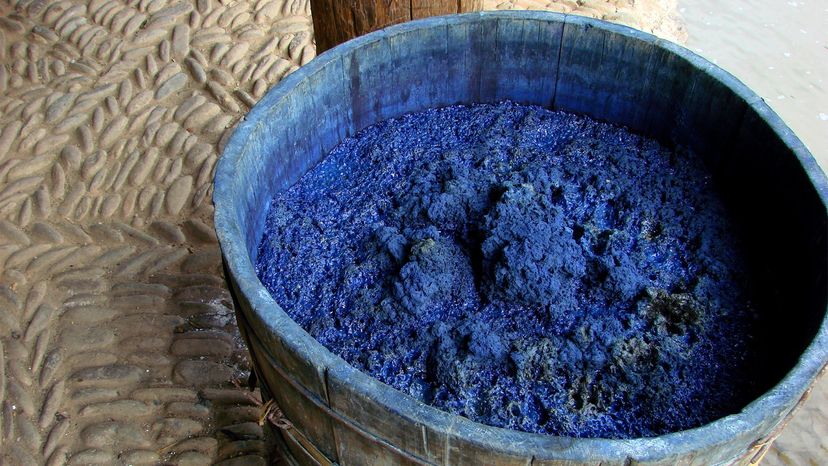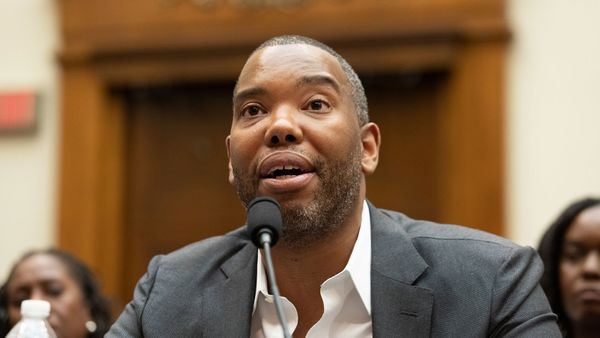Before 1856, when a teenaged British chemist named William Perkins accidentally formulated the first synthetic dye while trying to find a cure for malaria (he produced mauveine, which was an intense purple color), harvesting natural resources for dyes was a big deal.
"Until Perkins' discovery, anything that had color — clothes, shoes, rugs, tapestries — was dyed with either a plant, a bug or a mineral," says Donna Hardy, the president and founder of the International Center for Indigo Culture.
Perkins discovered the means of making purple cheaply and in large quantities — before that, purple dye was very precious; the most reliable source was to extract it from the dessicated mucus gland of a sea snail. Blue was easier to come by, and useful because it could be mixed with other colors to make purples and greens, but before the advent of synthetic dyes, getting pigment out of the land was laborious.
To make anything blue, you needed indigo, an organic compound found in the leaves of certain plants — most notably indigo plants in the genus Indigofera (from India or South America), although other plants such as woad (Isatis tinctoria) contain indigo compounds, too — just in much lower concentrations. The first Indigofera used by Europeans was grown in the Far East (the word indigo comes from the Greek word for India). Indigo was highly valued in the West, but Europeans wanted their own source of indigo that wasn't so expensive. That's where the New World came in.

